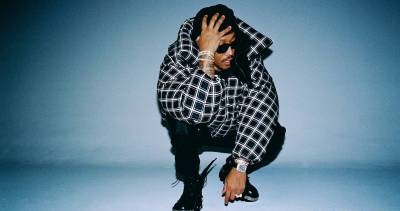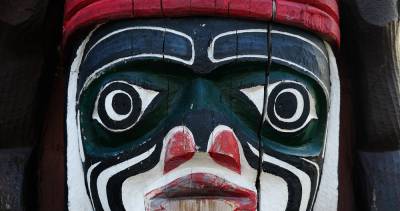Dutch-Belgian Town Borders on the Absurd
There is a pile of hair on the keyboard in front of me. Both the hair and the keyboard are mine. I have been struggling to come up with a simple way to explain perhaps the oddest town on the planet. It's not easy.
It is a Dutch town in the Netherlands. But it is also a Dutch town in Belgium. And a Belgian town in Belgium. And a Belgian town in the Netherlands. And there are even bits of the Dutch town in the Belgian town in the Dutch town.
In effect, you have the Netherlands surrounded by Belgium surrounded by Belgium bordering on Belgium.
Confused? Me too.
Together, Baarle-Nassau and Baarle-Hertog form a checkerboard of a community in the southern Netherlands. It is a quiet burgh of about 9,000 people, located just north of the Dutch-Belgian border.
Baarle is a community with a twist: large pieces of the town are actually part of another country--Belgium. And there is another twist: inside those pieces of Belgium are pieces of the Netherlands. The situation is created by a number of enclaves, portions of a country that are actually outside the country and surrounded by a different country. Because Baarle is made up of more than 30 enclaves, it is sliced and diced by borders. They run through homes, businesses, streets, and parks--everywhere.
Think of a white wall. The wall represents the Netherlands. Now dab 22 black dots on the wall. Those are Belgian, and together, they--along with one other piece located closer to Belgium--make up the community of Baarle-Hertog, Belgium.
It gets weirder.
Paint seven white dots inside the back dots. Those, together with the rest of the white that surrounds the black parts--plus another piece that is actually five kilometres south in Belgium proper--make up Baarle-Nassau, the Netherlands.
The result is that when you stroll around Baarle, you pass in and out of the two nations constantly. The good people of Baarle have realized that there is some tourism benefit to this, so they have marked most of the boundaries in the towns. You'd think that with all the markings it would be easy to keep track of which country you're in. Not so. In fact, there are so many international frontiers here that you often don't know where you are.
I have created a cruel psychological game called What Country?. The game is simple. While walking through Baarle repeatedly ask your companions where they are.
"What country?" you ask.
"B-B-Belgium?" they stutter.
"WRONG! The Netherlands!" you bellow.
And then, five seconds later: "What country?"
"The Netherlands?" they guess.
"WRONG! Belgium!"
After a while, the stress of the game makes mental putty of your friends and you can often use this moment of weakness to convince them to buy you drinks.
If you look closely, you'll find other clues as to which country you're in. All Baarle houses are marked with special national number plates: rounded ones with Dutch colours for homes in the Netherlands, square ones with a Belgian flag for Belgian houses. Some divided homes actually have two number plates--one for each country.
Thankfully, the local residents speak the same language. This makes things considerably easier for them but does little for the non--Dutch speaking visitor. However, one thing that does make life easier for both citizens and visitors is the fact that both Belgium and the Netherlands are in the EU. This means that while borders are everywhere, there are no controls or customs officers to deal with. Movement across the frontier is unrestricted.
In Baarle, two is a popular number. Because the community is made up of two different countries, there's a lot of duplication. There are two civic governments--which means there are two elections for two mayors. There are also two sets of regional and national elections. There are two postal services. If you mail a letter from one country to another (which, in this case, means across the street), the letter will take a long route out of Baarle to Amsterdam or Brussels before returning to Baarle. This isn't the case when mailing within the same Baarle community. You can save yourself several days' delay by simply walking to the nearest mailbox in the other country and mailing from there. But use the right stamp!
There are two police forces that enforce different laws but share the same building. And there are two income-tax rates, two electrical systems, two phone systems, two school systems, and two tennis clubs.
Infrastructure costs that are shared between the two Baarles include civic services like garbage, sewage, fire, and public transit. The cultural centre is shared, too--but it's divided.
Until 2002, there were even two currencies. But since the introduction of the euro, shopping has gotten a bit easier. Stores are sprinkled throughout the two communities. The local population doesn't pay much attention to where they shop. Price is the determining factor. If cheese is cheaper in the Netherlands, you buy it there. If gas is cheaper in Belgium, you buy it there.
And then there is the beer. The finest beer store in the world must be De Biergrens--the Beer Border. And true to its name, the international frontier runs right through the store, the warehouse, and the parking lot. The selection is amazing: all sorts of Trappist varieties as well as beer from around the world. Even Moosehead. The owner told me that some stock must be brought in through the door in one country and then stored in that country. This is mainly to keep the tax collectors happy--of whom, of course, there are two.
The sign outside lists two phone numbers, one for each country. I asked if there were actually two phones. Smiling and pretending he hadn't heard this question a million times before, the owner took me to the till where there were two identical phones, one for each nation. Here you could make a one-centimetre international call.
Because there are so many divided homes, I wondered how officials determine the nationality of a house. The answer is simple: all divided buildings are located in the country where the front door is. Over the years some sneaky business owners have been known to move their front doors in order to take advantage of lower tax rates in the other country.
In the mid '90s, the boundaries were remeasured, and in one case a house in Belgium was suddenly in the Netherlands. The owners were able to move the house back to Belgium by moving their front door.
The reason for all this border craziness is quite complex. It goes back to 1190 and the days of fiefdoms. Back then a number of land transfers were made between the Duke of Brabant and the Lord of Breda. These transfers laid the groundwork for the situation today.
Belgium was actually part of the Netherlands until it declared its independence in 1830. But the ownership of the land in Baarle didn't change. Thus some parcels of land in the Netherlands remained part of Belgium. And some land in Belgium remained Dutch. In 1843 the border between the two countries was marked. But around Baarle, the surveyors found they couldn't figure out where to put the border. So between border markers 214 and 215--about 50 kilometres--they left things as they were.
In 1974 the two countries finally sat down to mark the official border between the two markers. They used old maps and documents to figure the puzzle out. When they finished, they placed a ceremonial marker in the centre of Baarle-Nassau. And this is how things remain today.
Back at De Biergrens you can get your own ceremonial marker: a bottle of Ne Baarlese Grensdruppel. The Flemish liquor, loosely translated as the Baarle Border Drop, comes in a bottle shaped like a border marker. It has a map of Baarle printed on it and makes the perfect companion when contemplating the odd political situation in Baarle-Nassau and Baarle-Hertog.
Now quick! What country are you in?
ACCESS: Baarle is about 125 kilometres south of Amsterdam. The easiest way to get there is by car. You can also take a Dutch train (NS) to the nearby towns of Breda or Tilburg, each which will put you only 20 kilometres from Baarle. If it's a nice day, hire a bike and cycle to Baarle. Or take a bus.
Baarle is also about 105 kilometres northwest of Brussels. Driving is your best option, but you can also take a Belgian train (SNCB) to Turnhout, about 15 kilometres from Baarle. It's up to you whether you want to take a bus or cycle.
I find the best method of arranging accommodation is through the always excellent Dutch tourism office, VVV. In Baarle-Nassau, they're at Nieuwstraat 16--in the heart of Baarle-Nassau (phone 013-507-9921).















Comments